The Pixel Fold was Google’s first phone with a flexible display when it launched last year. And at its upcoming Made By Google event, we’re about to get a successor: the Pixel 9 Pro Fold. So there’s no better time to check out how Google’s original flexible phone has survived being my daily-use device for a whole year.
The Pixel Fold is unlike any other foldable on the market. It has a curved, polished aluminum frame with squat dimensions that result in something shaped more like a passport than a traditional phone or Samsung’s long, thin sticks. When you open it up, you’ll find relatively thick bezels and a large main display that sits in landscape orientation rather than portrait like virtually all of its rivals. On the back, there’s an absolutely massive camera bar. But as I discovered after speaking to the phone’s designers, the chance to shape Google’s first foldable gave the team a blank slate to try new approaches. And I think the phone is all the better for it.
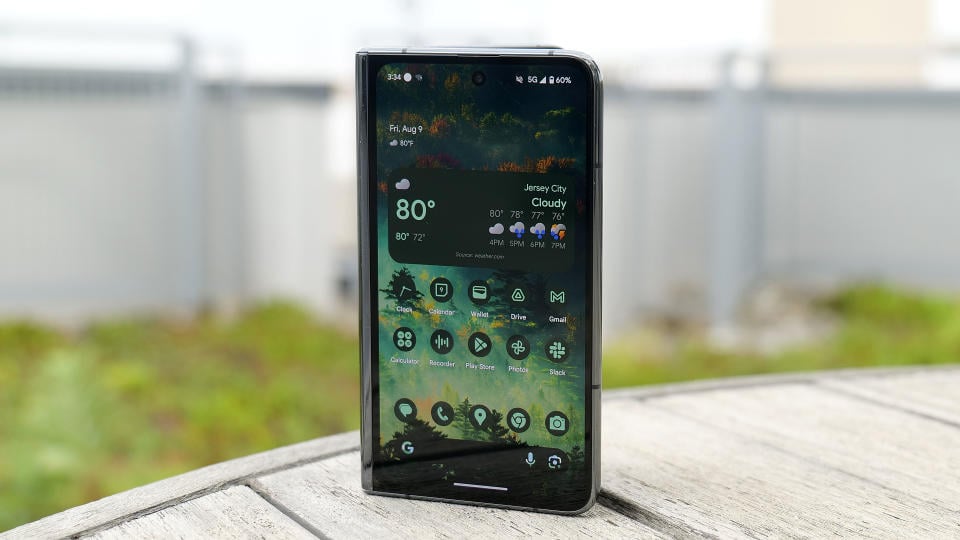
That’s because while its widescreen setup sometimes caused issues with apps and websites expecting portrait mode, it made sitting down to watch a movie much faster and more enjoyable. Its thick frame, meanwhile, left enough room for Google to build a selfie camera into the phone’s bezel rather than taking up space on its main display. And while its rear camera module is definitely bulky, it did allow Google to equip the Fold with sensors that are basically as good as those in a standard flagship Pixel (including 5x optical zoom). That’s something Samsung hasn’t quite managed to do with the Z Fold line yet, which continues to take a backseat in photo quality compared to an equivalent Galaxy S Ultra.
It's true that Samsung's version still has some features that the Pixel Fold doesn't, such as native stylus support and Dex mode, which offers a superior design for multitasking. Plus, thanks to Qualcomm's Snapdragon chips, it offers slightly faster overall performance. However, I think Google largely makes up for this with better software that includes apps like Pixel Recorder, Call Screener, and Live Translate.
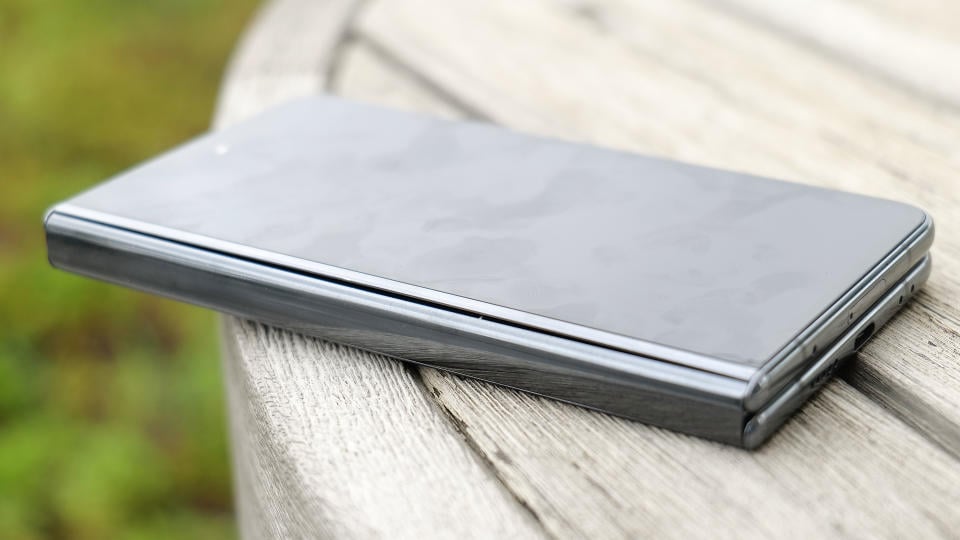

Overall, despite being Google’s first foray into the category, the Pixel Fold is a very attractive device with a unique design, class-leading cameras, and excellent displays — it’s pretty much everything you’d want in a big, fancy bendable phone. That said, one thing I wasn’t able to properly assess in my original review was the phone’s long-term durability. To come full circle, here’s how it fares a year later.
Before I get too deep, I should point out that I’m pretty strict about devices. The Pixel Fold I’ve been using has been naked since the day I received it, simply because I don’t like cases. After all, companies like Google spend millions creating exquisite designs, so it seems a shame to cover it all up in a cheap coverall. I also live with a toddler who doesn’t care about pretty things, so he doesn’t think twice about knocking the phone over when it’s in his way. But even so, the Pixel Fold has held up surprisingly well.
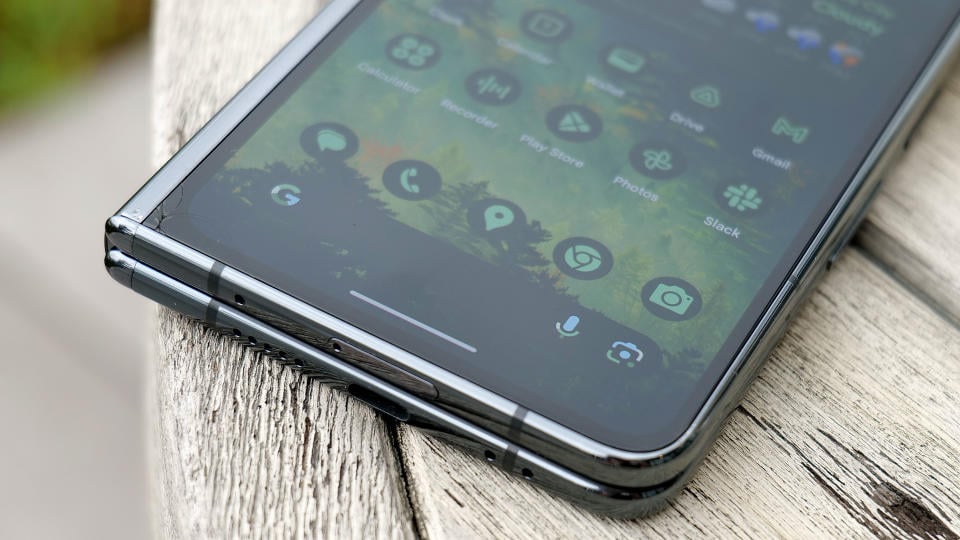

There are a ton of scratches and scrapes all over the frame, plus a few dings from drops. There are also a few scuffs on the back of the matte Gorilla Glass Victus, but this is all purely cosmetic. If you’re the type of person who gets a kick out of the wear and tear and patina of old furniture, you might even say that the Pixel Fold is aging rather gracefully considering the abuse it’s taken. Most importantly, though, none of this damage has affected the phone’s functionality.
That said, there is a small crack on the phone’s outer screen. But I want to be clear: That one is 100 percent my fault. While trying to potty train my son, I often sat on a low stool near him in a bathroom with a hard tile floor. And often, because of the way I was sitting, the phone would slip out of my pocket. This happened countless times, and I should have simply left the phone on a nearby changing table. But I didn’t, and about a month ago, it fell and hit the corner of the screen, causing a small spiderweb of fractures. Still, even with that imperfection, the screen’s functionality is not affected.
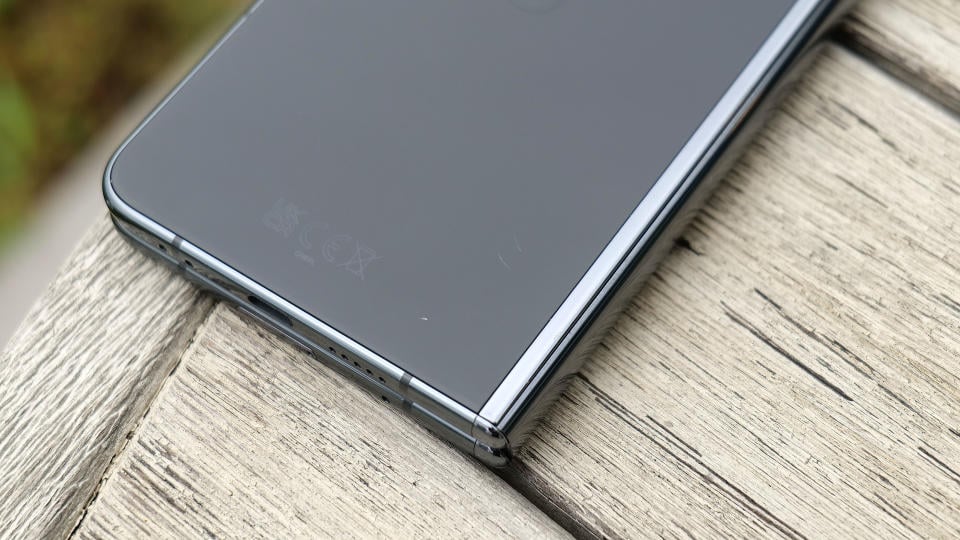

Naturally, I attempted to get the outer display repaired. Unfortunately, a representative from uBreakiFix (a Google-authorized repair center) told me that they didn’t have the necessary parts or the proper jig to replace the panel. I was then told to contact one of the company’s main branches in Kearny, New Jersey, which did have the necessary materials and gave me a rough estimate (over the phone) of about four hours and $220 for the repair. Then, just to be safe, I took the Pixel Fold to Google’s flagship retail store in New York for a second opinion, which resulted in a slightly cheaper rough estimate of $180. Both of these prices are in the same range of what it would cost to replace a display on a traditional candybar-style phone, which is a good thing considering the added complexity of the Pixel Fold’s design. As for its main display, likely due in large part to the fact that it’s protected by the rest of the phone when closed, it remained pristine.
I've also dropped this device in the sand, which freaked me out since its IPX8 rating technically only specifies its level of water resistance (up to 5 feet for 30 minutes). Things got even more worrying when I tried to open it up and was greeted by the distinct sound of particles moving around somewhere inside. But after cleaning it and blowing on the hinge like it was an old NES cartridge, everything was back to normal. Perhaps most impressive is that even after a year, there's not a single trace of bubbles from the Fold's factory-installed screen protector, which is something I have experienced on every Samsung Z Fold phone I've owned. And based on my online searches, aside from a handful of odd cases, I haven't seen many complaints from other Pixel Fold users either.


In many ways, the Pixel Fold’s impressive durability is another sign that Google has been keeping a close eye on the evolution of rivals like the Z Fold and studying it to see where it can be improved. Despite being the company’s first attempt at releasing a phone with a flexible display, the Pixel Fold definitely doesn’t suffer from many of the issues that first-generation devices typically do. The only thing I might do differently in the future is perhaps use a case instead of a holster to make the device a little less slippery when it’s in my pocket.
My only complaint about the Pixel Fold’s design is that it never fully opens. Admittedly, it’s a very minor complaint, but it does feel odd when the phone stops at a 179-degree angle, just before it goes completely flat. During my initial review, I thought the phone’s hinge might relax over time, but it remains as rigid as ever, which in all other situations is a good thing.
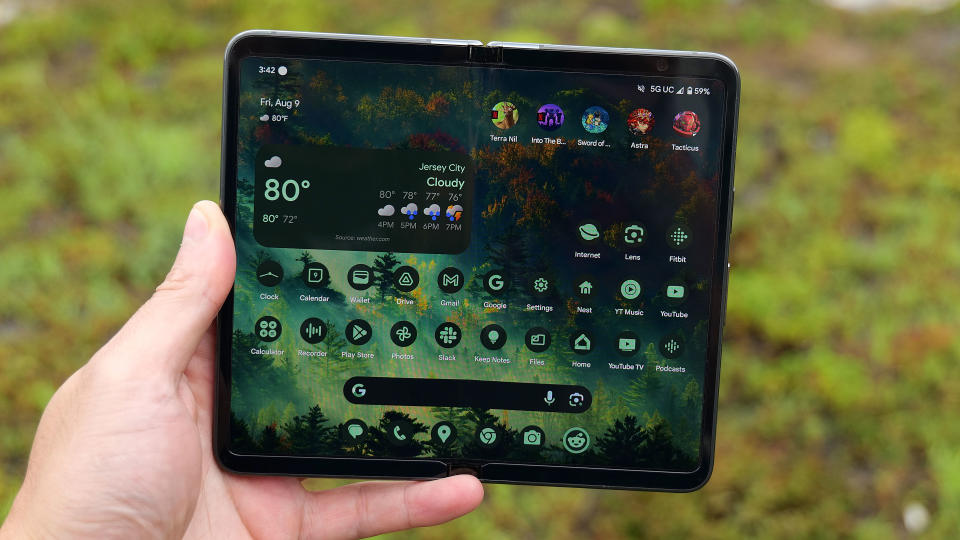

Still, for a type of device that many believe should be treated with kid gloves, the Pixel Fold has proven to be a lot more durable than I thought. And while it seems like Google has some major design changes in mind for the next model, I'm pretty pleased with what I've experienced so far.






